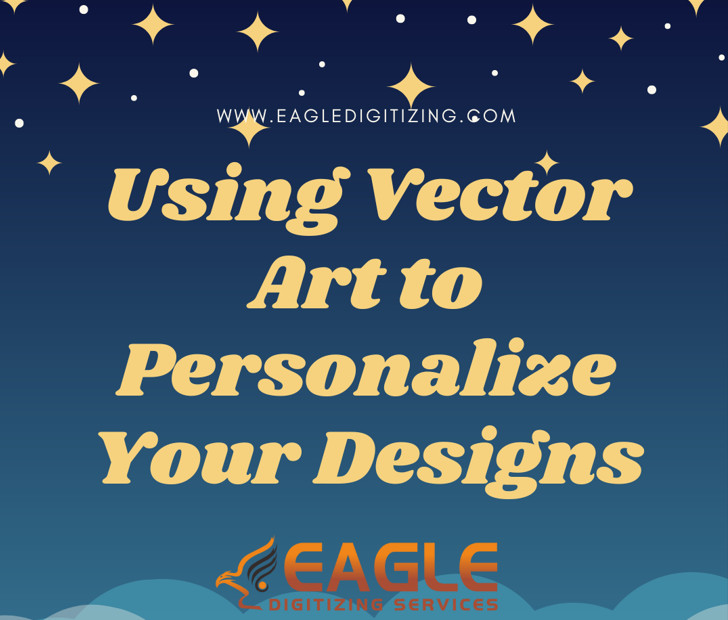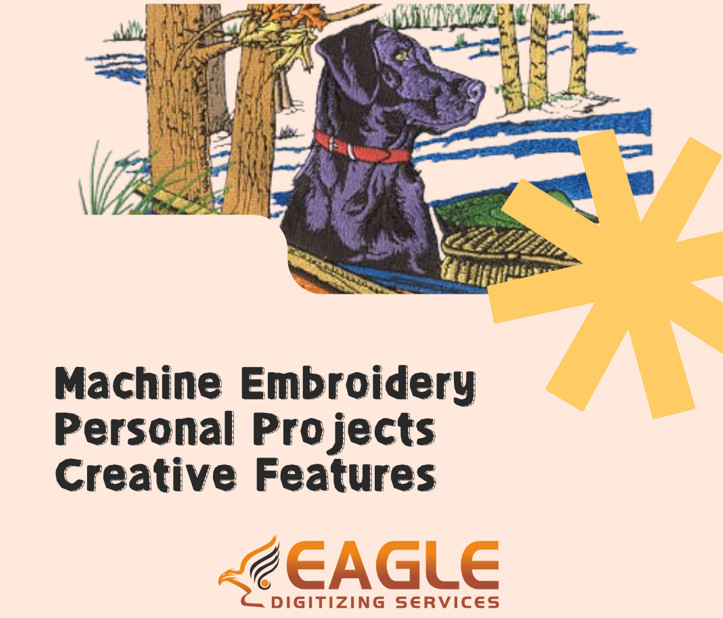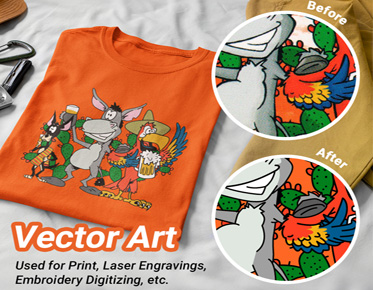Custom Patches 101: Using Vector Art to Personalize Your Designs
Custom patches have become a ubiquitous form of self-expression, allowing individuals and organizations alike to add a personal touch to their apparel, accessories, and promotional items. In this comprehensive guide, we'll delve into the intricate world of custom patches, focusing on the pivotal role of vector art in creating personalized designs that stand out from the crowd.
What
are custom patches?
Custom patches are more than just decorative embellishments; they're emblematic symbols of identity, belonging, and creativity. Whether adorning uniforms, jackets, hats, or bags, these patches serve as visual markers that reflect individuality, team spirit, or brand affiliation.
Importance
of personalized patches
In a world inundated with mass-produced goods, personalized patches offer a refreshing alternative that celebrates uniqueness and individual expression. From conveying personal interests and affiliations to promoting corporate branding and camaraderie, custom patches serve as tangible manifestations of identity and connection in an increasingly homogenized landscape.
Definition
of vector art
At the heart of every custom patch lies vector art – digital graphics created using mathematical equations to define shapes, lines, and colors. Unlike raster images, which are composed of individual pixels and can lose quality when scaled, vector graphics maintain crispness and clarity regardless of size.
Benefits
of using vector art for patches
Vector art offers unparalleled versatility and scalability, making it the preferred choice for patch design. Whether resizing a design for a miniature lapel pin or a larger jacket back patch, vector files ensure that details remain sharp and legible, preserving the integrity of the original artwork.
Software
tools for vector design
- Adobe Illustrator: Widely regarded as the industry standard for vector design, Adobe Illustrator boasts a
comprehensive suite of tools and features tailored for creating intricate
patch designs. From precise shape manipulation to advanced layering and
typography controls, Illustrator empowers designers to unleash their
creativity with unparalleled precision.
- CorelDRAW: As a formidable contender in the realm of vector design software, CorelDRAW offers a user-friendly interface and a robust set of tools for illustration, layout, and typography. Whether designing simple shapes or complex compositions, CorelDRAW provides flexibility and efficiency for vector artwork creation.
Design
considerations for patches
When crafting vectorart for custom patches, designers must account for factors such as color contrast, line thickness, and overall composition. Simplifying complex designs and opting for bold, defined elements ensures that patches maintain visual impact and legibility when translated into physical form.
Exporting
vector files
Once the vector design is finalized, it must be exported in a compatible file format such as .ai, .eps, or .svg for patch production. This ensures that manufacturers can accurately reproduce the design without loss of quality or detail.
Adjusting
size and dimensions
Before submitting vector files for patch production, designers should verify that the design dimensions align with the desired patch size. Scaling the artwork to fit within specified parameters ensures that the final patches meet size requirements and maintain visual coherence.
Fabric
options
Embroidered patches typically use twill fabric as a base, providing a durable and stable foundation for stitching. Twill is renowned for its resilience and ability to hold intricate designs with crisp detail.
Backing
and border types
Custom patches can feature various backing options, including heat-seal, adhesive, or Velcro backing for easy application and removal. Additionally, designers can choose from a variety of border styles such as merrowed, laser-cut, or embroidered edges to enhance the aesthetics and durability of the patches.
Embroidered
patches
Embroidered patches are crafted using computerized embroidery machines that meticulously stitch thread onto fabric to replicate the vector design. Multiple thread colors and stitch types are used to achieve texture, depth, and intricate detail in the final patch.
PVC
patches
PVC patches are molded from soft, flexible PVC material using custom molds that replicate the vector design. The design is then filled with colored PVC material, creating a raised, three-dimensional effect that enhances visual appeal and tactile texture.
Woven
patches
Woven patches are produced using a weaving process that creates designs with fine, detailed lines and smooth surfaces. Unlike embroidered patches, woven patches do not feature raised elements, resulting in a sleek, flat finish ideal for intricate artwork and small text.
Reviewing
digital proofs
Before commencing patch production, manufacturers typically provide digital proofs or mock-ups for client approval. Reviewing these proofs allows clients to ensure design accuracy, color fidelity, and layout alignment before finalizing production.
Ensuring
accuracy and detail
Manufacturers employ stringent quality control measures to inspect the stitching, color consistency, and overall craftsmanship throughout the production process. Attention to detail is paramount in ensuring that patches accurately reflect the intended design and meet quality standards.
Selecting
a reputable manufacturer
When ordering custom patches, it's imperative to partner with a reputable manufacturer known for producing high-quality, durable patches with meticulous attention to detail. Conducting thorough research, reading customer reviews, and requesting samples can help identify trusted suppliers.
Quantity
and pricing considerations
Various factors, including quantity, size, complexity, and patch type influence patch pricing. Ordering larger quantities often results in lower unit costs, making bulk orders economically viable for organizations, businesses, and event planners seeking to distribute patches to a broader audience.
Sewing
vs. iron-on patches
Custom patches can be applied using either sewing or iron-on methods, each offering distinct advantages and applications. Sew-on patches provide permanent attachment and durability, while iron-on patches offer quick, temporary applications suitable for lightweight fabrics.
Creative
ways to use patches
From embellishing apparel and accessories to customizing uniforms and merchandise, custom patches offer endless possibilities for personalization and branding. Incorporating patches into fashion ensembles, DIY projects, and promotional campaigns adds a unique and memorable touch to any endeavor.
Washing
instructions
To prolong the lifespan of custom patches, it's essential to follow care instructions specific to the patch material and backing type. Machine-washing patches on a gentle cycle with mild detergent and air-drying flat helps preserve color vibrancy and prevent damage.
Long-term
durability
Proper maintenance and storage practices, such as avoiding exposure to extreme temperatures and moisture, can help extend the longevity of custom patches. Periodic inspection for loose threads, fraying edges, or adhesive degradation allows for timely repairs or replacements to maintain patch integrity.
Custom patches serve as versatile and expressive mediums for personalizing designs
and communicating messages across diverse applications. By harnessing the power
of vector art and collaborating with trusted manufacturers, individuals, and
organizations can transform their creative visions into tangible, wearable
works of art that leave a lasting impression. Whether used for individual
expression, brand promotion, or commemorative purposes, custom patches offer a
unique and impactful way to make a statement and connect with others on a
visual and emotional level.



